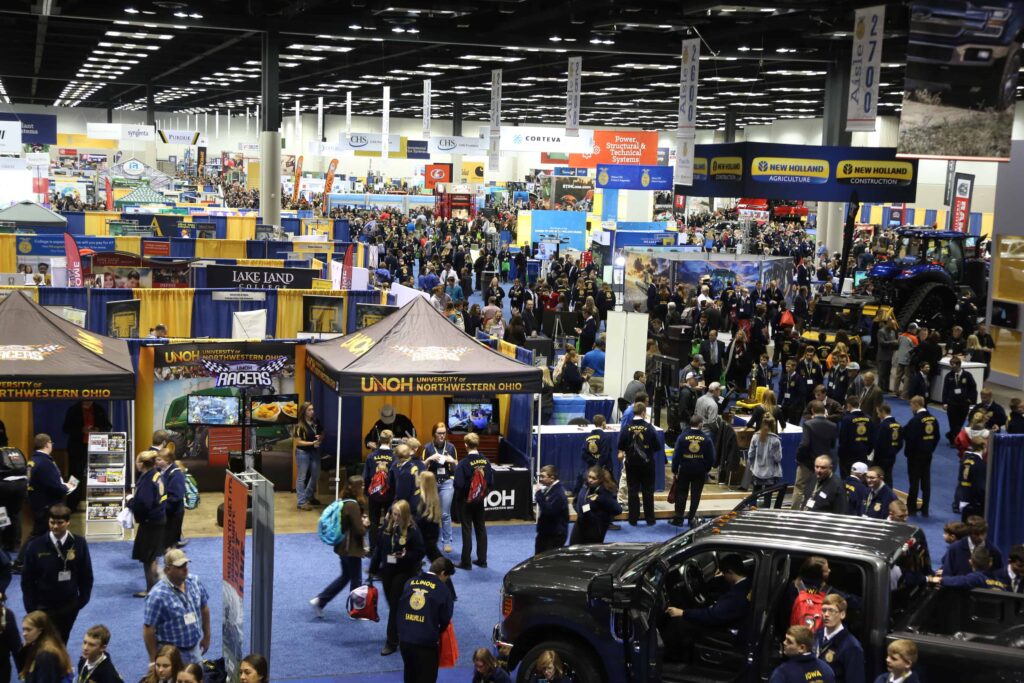
The National FFA Expo inside the Indiana Convention Center hosted more than 400 exhibitors during the 2018 National FFA Convention & Expo. Photo courtesy of the National FFA Organization.
Agricultural education in the United States became widespread after the passage of the Smith-Hughes Act of 1917, which helped promote vocational agriculture courses. On November 20, 1928, 33 students from 18 states founded the Future Farmers of America (FFA) to support youth agricultural education when they attended its first organized national convention in Kansas City, Missouri. Before moving to Indianapolis, the organization was headquartered in Alexandria, Virginia. Since 1933, FFA members have been recognized by their blue corduroy jackets.
The organization was for white males until it merged with the New Farmers of America, the Black youth farmers association, in 1964. Women officially gained membership in the FFA in 1969. The organization changed its name from Future Farmers of America to National FFA Organization in 1988 to reflect its updated mission.
Each year the FFA holds a national convention that attracts delegates from every state. It was held in Kansas City, Missouri, until 1998. FFA moved to Indianapolis that year, and the city also hosted the convention.
At the convention, students in the FFA compete for awards in areas such as dairy production, livestock judging, and agricultural sales. The most prestigious award is the American Star Farmer, which is awarded to one student each year.
Louisville, Kentucky, hosted the convention from 1999 to 2005, before moving back to Indianapolis from 2006 to 2012. In 2013, it began to rotate every three years between Indianapolis and Louisville, but in 2018 the FFA decided to keep the convention in Indianapolis through 2031. It is one of the major expositions and conventions that has a major impact on the local economy. In 2019, the FFA convention brought over 68,000 people (primarily high school students) and generated about $38 million for the city. The COVID-19 pandemic caused its cancelation in 2020 and an estimated loss of $40.3 million to Indianapolis.
In addition to its annual convention, the FFA aims to support students in agriculture through educational programs. Over time, the organization’s mission has grown to encompass many areas of the agricultural industry and agricultural careers, working to include students interested in teaching, business ownership, engineering, biology, chemistry, and veterinary medicine, as well as farming. There are 8,630 chapters with over 660,000 members in all 50 states, Puerto Rico, and the U.S. Virgin Islands.

